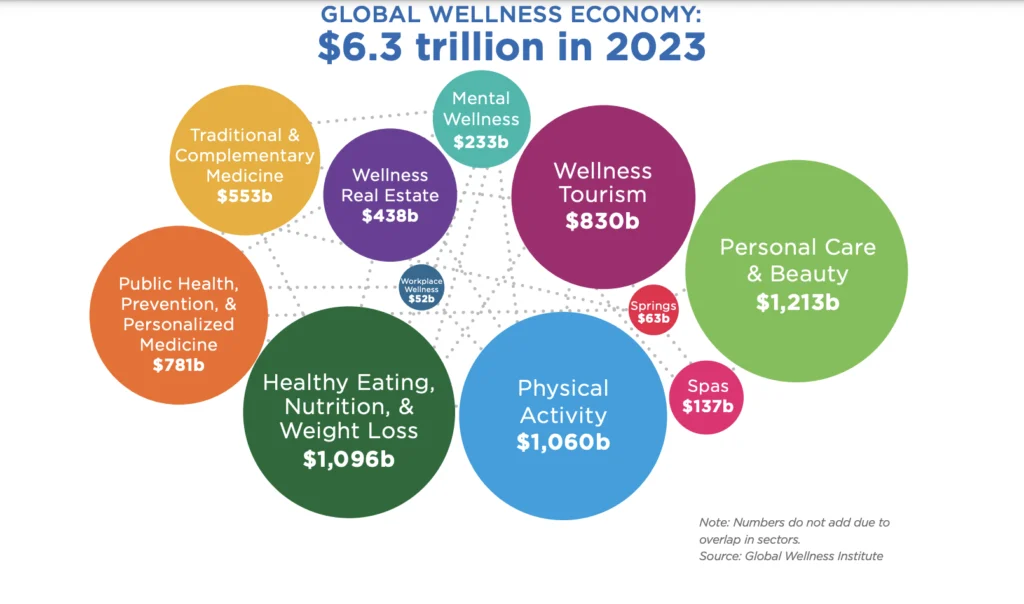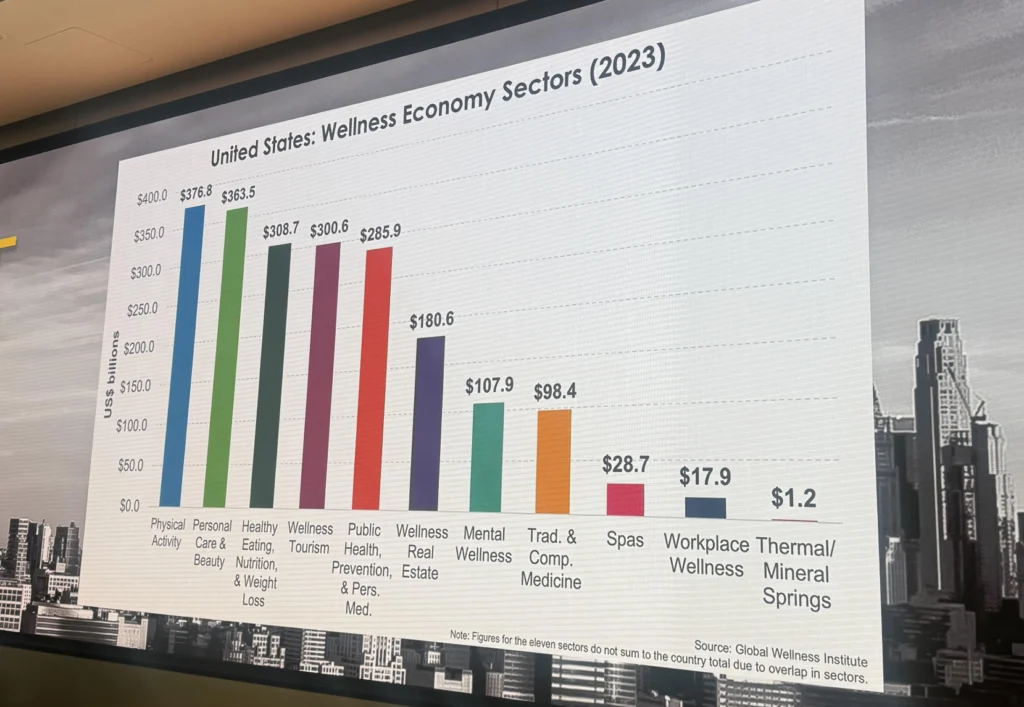
America’s wellness economy is by far the largest in the world, outpacing second-place China by over $1 trillion
The United States might have a laundry list of public health problems, but at least it’s spending big on wellness.
The U.S. wellness economy is now worth $2 trillion, more than double the size of the next highest country, according to data released Tuesday by the Global Wellness Institute (GWI), a nonprofit organization.
The American wellness economy continues to grow at an impressive rate, up from $1.8 trillion in 2022. In 2023, the U.S. accounted for a staggering 32% of the entire $6.3 trillion global wellness economy, per GWI.
China had the second-largest wellness economy in the world in 2023, worth $870 billion, followed by Germany ($310 billion), Japan ($255 billion) and the United Kingdom ($230 billion).
The top 10 countries with the largest wellness markets accounted for 70% of the total global wellness economy while the top 25 countries accounted for 86%, showing that while wellness is indeed a global phenomenon, the sector tends to mirror worldwide economic inequalities.
Almost all of the top 25 largest markets have surpassed their pre-pandemic wellness economy values, including the U.S., GWI found. The American wellness economy is 37% larger than it was before the pandemic, with wellness spending growing by 8.3% every year over the last five years, including 2020, surpassing the nation’s overall rate of economic growth.
Americans now spend over $6,000 per year on wellness, with wellness spending accounting for 7.4% percent of the U.S. economy, according to GWI.
“The United States continues to lead the global wellness economy, not only by its size and per-capita spending, but also by its resilience and growth,” GWI senior research fellows Katherine Johnston and Ophelia Yeung said in a joint statement. “However, U.S. healthcare spending continues to skyrocket while health outcomes are still among the worst compared to other wealthy countries. So, it is fair to ask if this massive consumer wellness market can spend its way to broad-based health and wellbeing.”

The Global Wellness Institute also revealed data breaking down how Americans are spending their money when it comes to wellness.
Physical Activity Tops the Big 3 Wellness Categories
In what should come as welcome news for the fitness industry, physical activity was the largest category of the U.S. wellness economy in 2023, accounting for $377 billion, per GWI.
Personal care/beauty ($364 billion) and healthy eating/nutrition/weight loss ($309 billion) were the second and third largest categories, respectively.
While these three wellness categories are the largest, they aren’t the fastest growing. Physical activity spending increased at a 5.9% annual growth rate between 2019 and 2023, with personal care/beauty seeing 4.9% annual growth. Healthy eating/nutrition/weight loss saw a slightly more modest increase, growing at 7.9% per year over the same period.
According to Johnston, the growth of these categories is highly dependent on general consumer spending and inflation patterns.
“A lot of the growth that we see in these sectors is simply people paying more for the things that they’re buying, rather than an actual increase in (the quantities of goods) people are buying,” she said.

Wellness Real Estate, Tourism Are on the Rise
As for sectors that are growing fast, the wellness real estate market continues to boom in the U.S., worth $181 billion in 2023, good for a 17.6% annual growth rate since 2019. Mental wellness is also a category to watch, now worth $108 billion, growing 13.9% per year between 2019 and 2023.
The U.S. market for public health/preventive medicine/personal medicine was worth $286 billion in 2023, a 16.3% annual growth rate since 2019. Traditional/complementary medicine has also seen a strong increase, reaching $98 billion in 2023, up 11.3% year-over-year since 2019
Wellness tourism also continues to rebound well from the carnage of the pandemic. America’s wellness tourism industry was worth $301 billion in 2023, up 21% from its pre-pandemic value of $249 billion in 2019.
The Workplace Wellness Conundrum
Despite the apparent rise of corporate wellness platforms and programs, workplace wellness experienced the smallest growth of any category tracked by GWI.
The workplace wellness market was worth $17.9 billion in 2023, just slightly up from its $17.3 billion valuation back in 2019.
The slow growth of the workplace wellness category is likely due in part to the rise of alternative forms of working like gig work, informal work and temp work, Johnston noted, since workers in these categories generally don’t have access to benefits.
There’s also been a rise in more holistic approaches to workplace wellness, including job flexibility and paid leave programs, which can be hard to measure using traditional methods.
“There’s a lot of growth in this sector,” Johnston said. “It’s just not growth that we can measure in dollar signs.”
